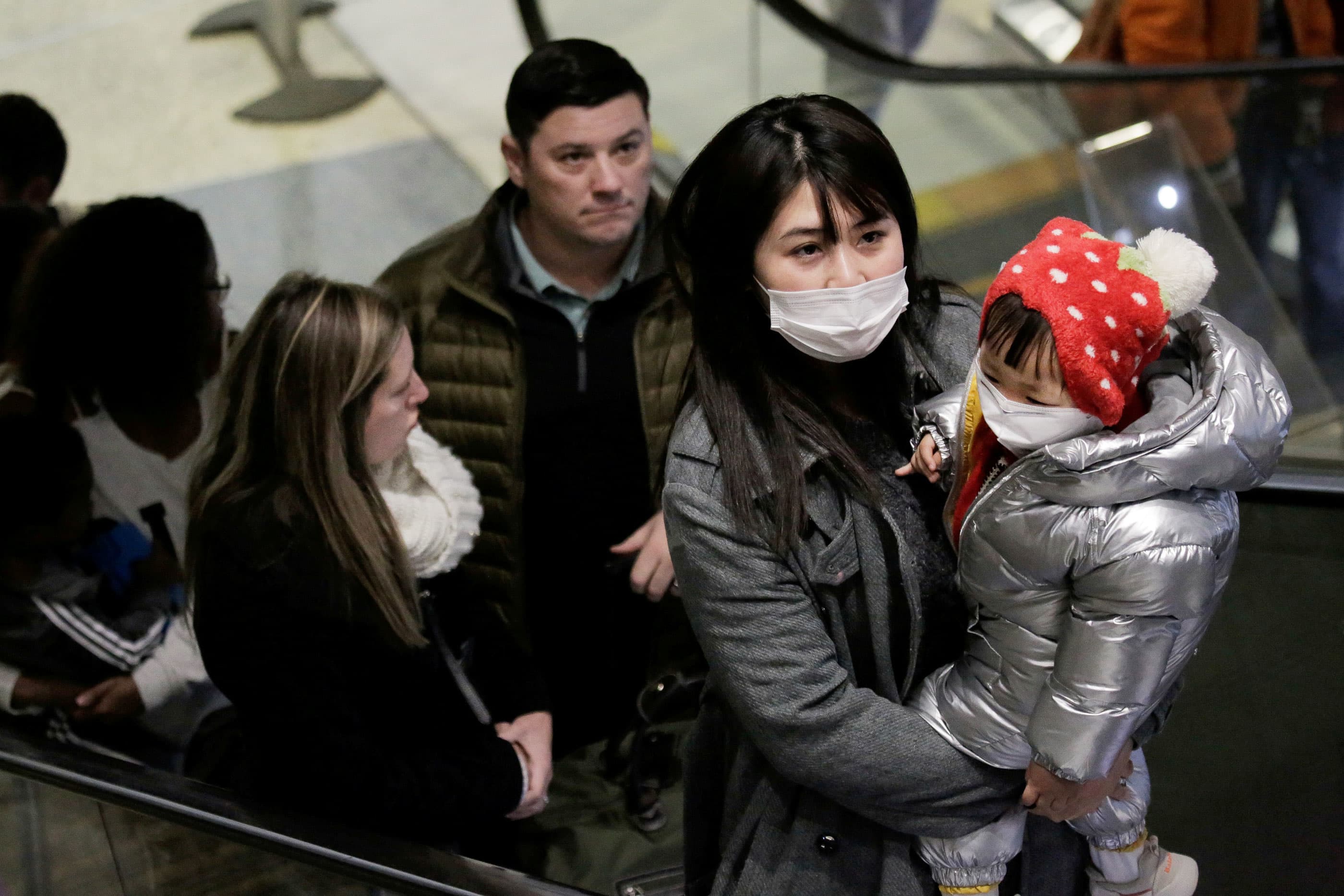
Travelers wearing masks arrive on a direct flight from China, after a spokesman from the U.S. Centers for Disease Control and Prevention (CDC) said a traveller from China had been the first person in the United States to be diagnosed with the Wuhan coronavirus, at Seattle-Tacoma International Airport in SeaTac, Washington, January 23, 2020.
David Ryder | Reuters
The Centers for Disease Control and Prevention said it revised its guidelines on Thursday to allow clinicians across the U.S. to test more people suspected of carrying the new coronavirus.
Under the prior federal guidelines, clinicians could test suspected COVID-19 patients if they had traveled recently from China or had been in contact with someone known to be infected. Some lawmakers criticized the CDC’s previous guidance as too restrictive.
The new guidelines, which were posted to the CDC’s website Thursday, appear to place more power in the hands of local health practitioners to determine who should get tested.
“We revised our case definition for persons under investigation and today that has been posted along with a new health advisory,” Director of the CDC Dr. Robert Redfield told a House of Representatives subcommittee Thursday. “When a clinician or public health individual suspects coronavirus then we should be able to get a test for coronavirus.”
Could be a cluster of cases
“So this person in Northern California, who didn’t travel to China, who we don’t know where he got the coronavirus, he could have passed it on to two more people, who passed it on to two more people, who passed it on to two more people,” he told the congressional subcommittee on Asia, the Pacific, and Nonproliferation. “So there could be a whole cluster of cases, but until as of yesterday, we don’t know because we weren’t testing anyone who didn’t travel to China.”
Representatives for the CDC were not immediately available for comment on why they changed the guidelines.
Beyond the federal guidance for whose eligible to receive testing for the coronavirus, epidemiologists and public health officials have raised questions about the U.S. capacity to conduct tests amid a potential epidemic in the U.S.
California Governor Gavin Newsom said Thursday that the state is currently monitoring more than 8,400 people for the coronavirus.
“New testing protocols are being advanced, they can’t happen soon enough,” Newsom told reporters earlier Thursday. “Testing protocols have been a point of frustration for many of us across the spectrum, not only the spectrum within the health system but across states.”
In answering a question about why California wasn’t more prepared to test the patient sooner, Gavin said: “No state was, no state had the ability to access” the tests.
Testing Capacity
Beyond the federal guidance for whose eligible to receive testing, epidemiologists and public health officials have raised questions about the U.S. capacity to conduct tests amid a potential epidemic in the U.S. Despite monitoring more than 8,400 individuals, the state of California only has “a few hundred testing kits,” Newsom said Thursday.
“That’s simply inadequate to do justice to the kind of testing that is required to address this issue head on,” Newsom said.
The CDC sent test kits earlier in the outbreak to public health labs around the country, but those kits were problematic, CDC officials have since said, and potentially inaccurate. On Tuesday, Dr. Nancy Messonnier, director of the CDC’s National Center for Immunization and Respiratory Diseases said that the CDC was “working to modify the kit and hope to send out a new” one soon.
Because local clinicians can’t depend on the test kits, they have to ship samples to a laboratory with the ability to run the tests. Earlier this week, Messonnier said that there are about a dozen state and local labs that can run the test. The rest, she said, are sent to CDC in Atlanta.
The inability to run tests at local facilities meant that clinicians in some parts of the country had to wait for days to receive results. However, the number of labs with the ability to run the tests has been increased to roughly 40, Redfield said Thursday.
Faster testing abroad
Dr. Michael Mina, a professor of epidemiology at Harvard’s School of Public Health, said that many local labs have the capacity to run the tests, but that the limitation is a matter of policy.
“It’s not a super sophisticated test that only a few labs could run,” he said Thursday on CNBC’s “Closing Bell.” “It’s been more a policy issue about which laboratories are allowed to run it and it’s been fairly restricted by the Centers for Disease Control.”
Mina pointed to South Korea, which has tested over 39,000 people as of Thursday morning. The CDC’s website says it’s tested just 445 people so far, although Health and Human Services Secretary Alex Azar said earlier Thursday that more than 3,700 people in the U.S. have been tested. World Health Organization officials said earlier Thursday that China’s Guangdong province has tested over 300,000 people since the outbreak began.
As the virus spreads in the U.S., Mina said, health officials will need to ramp up the country’s testing capacity.
“We don’t know where the virus is circulating, and I think the patient in California is a good example of how unless we’re testing and checking we just don’t know what’s circulating in the community,” he said. “And so there are patients throughout the whole country that probably should be being tested.”



